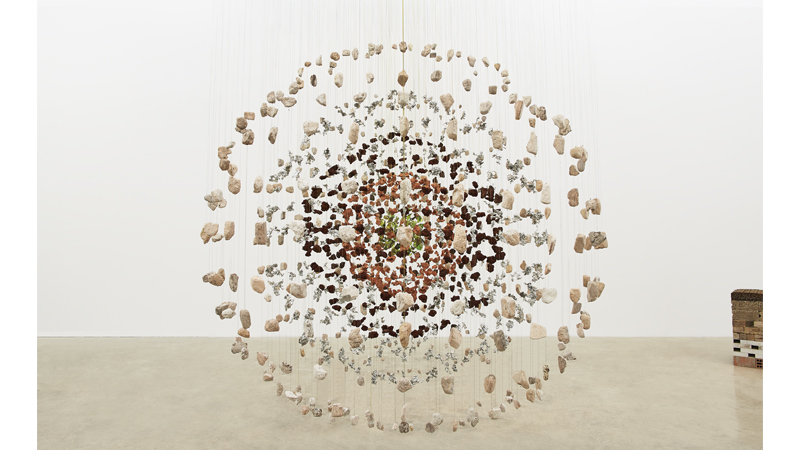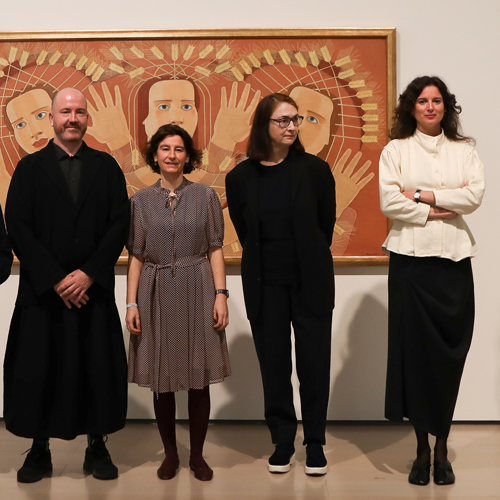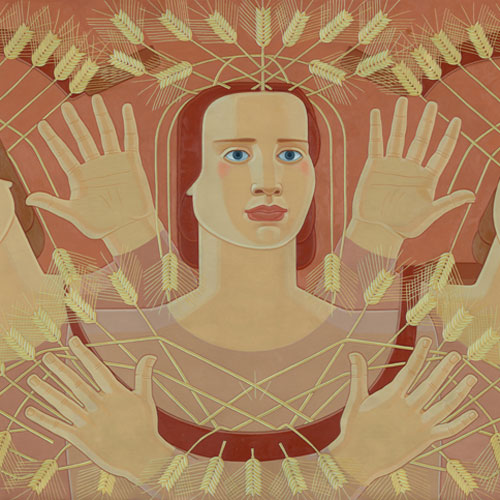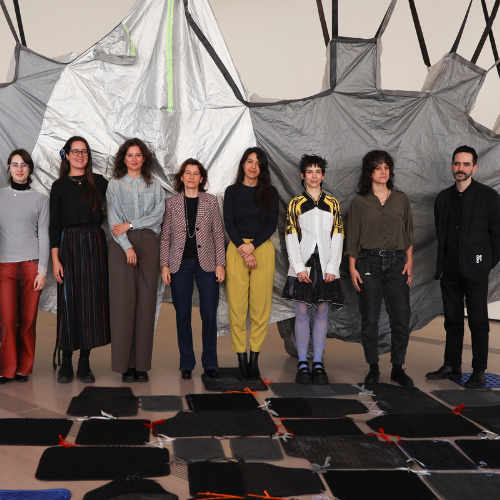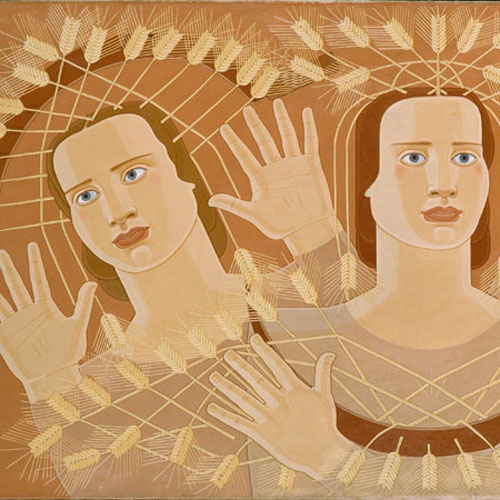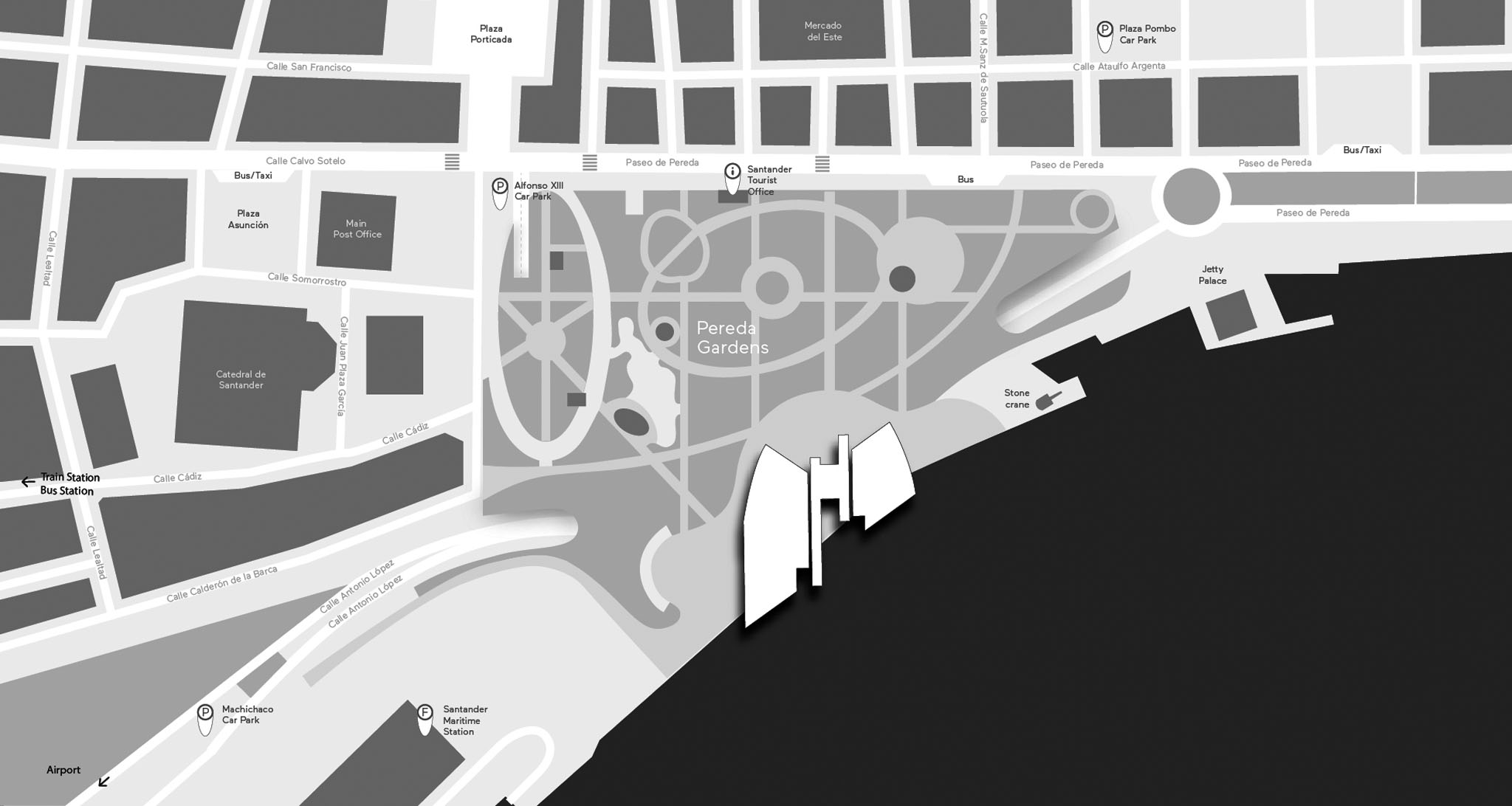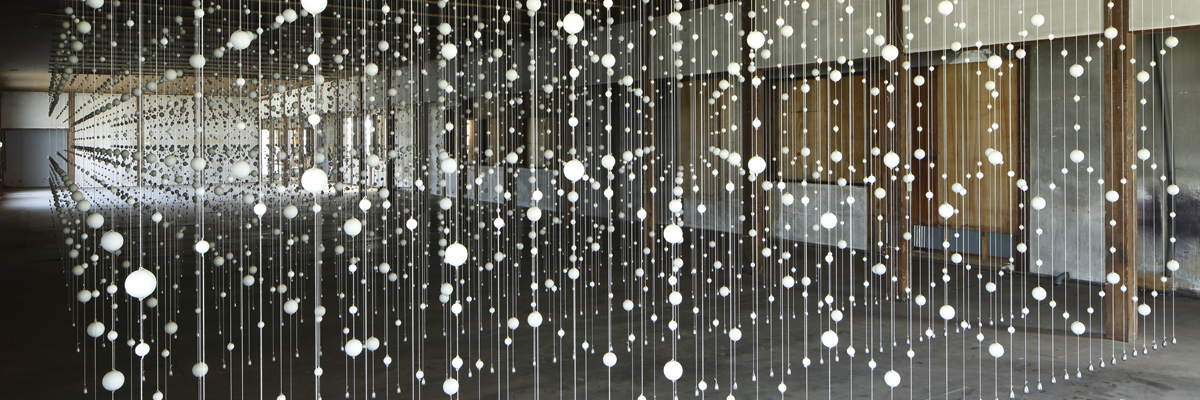
CENTRO BOTÍN TO PUT ON ‘EXPANDED VIEW’ EXHIBITION OF WORKS BY RENOWNED MEXICAN ARTIST DAMIÁN ORTEGA
- Curated by Vicente Todolí, President of Fundación Botín’s Art Advisory Committee, the collection brings together nine of Damián Ortega’s suspended works for the first time, giving visitors a new transcendent view of the world around us.
- An accompanying catalogue to be jointly published with La Fábrica contains contributions from the exhibition curator, art critic Peio Aguirre, Italian curator Roberta Tenconi and poet Rafael Toriz.
- Damián Ortega will also lead Fundación Botín’s next Art Workshop from 21 November to 2 December 2022. The theme will be masks and the event will be suitable for a wide range of creators including artists, dancers, writers, chefs, jewellers and carpenters.
Centro Botín presents Expanded View [Visión Expandida], an exhibition of works by Mexican artist Damián Ortega (b. Mexico City, 1967). Curated by Vicente Todolí, President of Fundación Botín’s Art Advisory Committee, the exhibition runs from 8 October until 28 February 2023 on Floor 2 of Fundación Botín’s arts centre in Santander. In his artwork, Ortega uses his ingenuity and humour to deconstruct familiar objects and processes. By changing their functions and transforming them into original experiences and hypothetical situations, he raises broader issues such as the economic, social and political discourse associated with the material and the relationships it is given.
The artist investigates various aspects of the material used from its composition and molecular behaviour to the discourses that shape it and situate it within ownership dynamics and hierarchies. His work applies the concepts of physics to human interactions where chaos, accidents and instability produce a system of relationships in constant flux. In so doing, Ortega explores the tension within each object, targeting, reorganising, scrutinising, and using his logic to reveal his endless conceptual imagination. The results of his investigations show the interdependence between various components, whether that be within a social system, a domestic object, or the workings of a complex machine.
Although the artist produces sculptures, installations, performances, videos, and photographs (all from drawings), he always sees an artwork as an action: an event. His experiments inhabit a space where the possible and the everyday come together, creating a new transcendent view of ordinary objects and routine interactions. Ortega uses irony to explore different subjects—including the most complex—and language and poetry play a key role in his work. Recurring themes are human relationships with machines and technology, and he also references nature and geological formations in the titles of his works and the materials he chooses for many of his pieces.
Visitors to Expanded View are able to take in Damián Ortega’s work through nine sculptures suspended in the exhibition space. The choice of display method aligns with an idea thought up some time ago by avant-garde artists, who decided to stop using traditional plinths and instead have their sculptures floating freely in the air. This choice reflects a desire to engage differently with the onlooker, the space and gravity, as well as to reject fixed states.
Exhibition curator Vicente Todolí explains: “Expanded View is the first exhibition focusing on Ortega’s suspended works. It begins in the north of the space (and in relation to the city) with his legendary Cosmic Thing – a deconstructed Volkswagen Beetle that hangs in the air with all its innards exposed. In the central area, materials are meticulously dissected to form the globe, then the exhibition ends with Hollow/Stuffed: market law – a bayside submarine that gradually deflates as the salt inside pours out. The creation and destruction of the world around us are latent within each work.”
Damián Ortega will also lead Fundación Botín’s next Art Workshop from 21 November to 2 December 2022. The theme will be masks and the event will be suitable for a wide range of creators including artists, dancers, writers, chefs, jewellers and carpenters.
Exhibition Tour
In the most northern side of the museum, in dialogue with the city, visitors find Cosmic Thing (2002). The pieces of a Volkswagen Beetle—a German product made between 1945 and 1948 during the consumption boom after the Second World War—have been dismantled and hang in the air suspended by narrow steel cables. This work is open to interpretation. Art critic Peio Aguirre, who has written an essay for the exhibition catalogue, believes it explores capitalist modernisation and its different rhythms in the world. He cites Mexico, where the Beetle marked a turning point in the democratisation of consumption and in popular know-how.
This is followed by Harvest (2013), comprising steel sculptures that hang from the ceiling and are illuminated by overhead lamps. Look at this piece from a distance, and you see a chaos of abstract shapes suspended in the space. But move closer, and you notice the sculptures’ shadows actually cast the letters of the alphabet on the floor in a neat handwritten style. This work challenges our perception and reading of reality while echoing the many references and quotes from literature we find in the artist’s work. Ortega says the piece is based on his mother’s handwriting to establish a conceptual relationship with the expression “mother tongue”.
Viaje al centro de la tierra: penetrable [Journey to the centre of the Earth: penetrable] (2014) is a metal structure made up of suspended materials: tubular leather, pumice stone, ornate ceramics and glass. Ortega dissects the globe using various layers of materials, shapes and colours to break away from classic, monolithic and solid depictions. This work challenges the idea of a sculpture as an object, monument or piece. With it split into thousands of fragments, we move away from solidity and pedestals as humour casts off the heroic status of the monumental.
The next work is Polvo estelar [Stardust] (2016), which is made up of natural materials including sponge, wood, clay, tezontle volcanic rock and pumice stone, as well as synthetic materials like plastic and nylon. The materials hang at different heights and distances, creating a “spray” or stretched-out molecular structure. This composition is an arrangement of interrelated elements, creating a kind of ecosystem extending out from the epicentre. With this piece, Ortega had certain criteria for the kinds of objects he wanted to collect. He explains: “It was about finding a scattering of items that weren’t doing anything anymore: a plastic pen tube without any ink, a seed husk, a crushed cap, a shoe eyelet, a pencil tip, a chewed rubber… The aim was to create a galaxy or dynamic constellation suspended from the ceiling. Like a black hole that has swallowed everything up, meaning it now has no useful purpose but goes on surviving, these items stop making sense in a world of productivity and become homeless nomads, stray bullets, residues of the world they once served but no longer belong to.”
Another “exploded” work is Controller of the Universe (2007), which comprises hundreds of second-hand tools used for manual work in carpentry, construction, gardening and wood and metal workshops. The tools hang in descending size order, creating an orderly vortex with four passageways to the centre, which is empty and the epicentre of the explosion. This piece shows that technical control is always available. Your eye is drawn to the centre and the tools become extensions, as well as frontiers and filters. The title refers to a famous Diego Rivera fresco, Man at the Crossroads (1933), which depicted a factory worker controlling a large machine as a centre of technological, artistic and scientific progress.
Continuing the geological dissection, Volcán [Volcano] (2013) is shaped like a volcano with an upside-down volcano on top. The bottom volcano is made out of small red pieces of tezontle – a volcanic rock used for construction in Mexico. The top section comprises fragments of coloured glass. Ortega explains that he thought it a good idea to put a volcano in the middle of an exhibition so visitors would recognise the oppression and energy release experienced by lava. With the feel of an equivalent space, the geometric composition features two cones stacked together in the style of an hourglass. This work is like a three-dimensional diagram of a volcanic explosion.
H.L.D (Height, Long, Deep) (2009) is a wooden chair that has been dismantled and suspended along three axes, suggesting diverse perceptions. Using a single image, Ortega creates a long deductive and conceptual process whereby the three dimensions form an object. The result is a process of integration and condensation that combines elements of different tendencies as an extraordinary and almost miraculous phenomenon. The empty chair remains intact in the centre, possibly referring to the position of a body or a person invited to reconsider their point of view. It is a slight structure that unites and makes us rethink our view of the ordinary.
An ambiguous relationship with nature appears again in the next work, Warp Cloud (2018). This represents the chemical structure of a water drop, with white spheres of different sizes symbolising molecules of hydrogen and oxygen. The piece also refers to the Oaxacan textile tradition that thinks of the junctions between vertical and horizontal threads as the meeting of land and sky. The artist is clearly defending the idea of making art focused on features and necessities that are local, communal, immediate and focal, without extending to the formats and conventions of current practice based on personal desires and needs. He believes we are hybrid, complex and comprehensive characters, and that Wrap Cloud and many other works in the exhibition are about the individual’s presence in the whole – in a collective space.
Hollow/Stuffed: market law (2012) is the exhibition’s final work. In it, the artist uses reality as a lens through which to consider various topics including economic exploitation, the abuse of power, colonial history and national identity. A submarine made out of old plastic sacks, metal and salt hangs from the ceiling. The large bag is “bleeding” from a small hole that emits the contents (salt), which then piles up on the floor. The artist relates this work to the idea of generating a commodity to extract and market in different locations, regardless of the impact on its place of origin, as is the case for cocaine. The piece refers to the “narco-submarines” that transport the substance and are used by drug dealers as business tools in Mexico. The exhibition space has a reading area designed by the artist to house publications by his Alias platform that distributes artists’ writing, together with popular Spanish texts by authors including Marcel Duchamp, John Cage, Robert Smithson, Helio Oiticica, Serguei Eisenstein, Sol LeWitt, Yoko Ono, Minerva Cuevas, Ulises Carrión and Clara Porset. What’s more, the exhibition has its own catalogue jointly published with La Fábrica. This includes a critical theory essay by Peio Aguirre, nine poems by Rafael Toriz and Damián Ortega’s interview with Roberta Tenconi. It contains images of every work on display together with sketches and further details.
